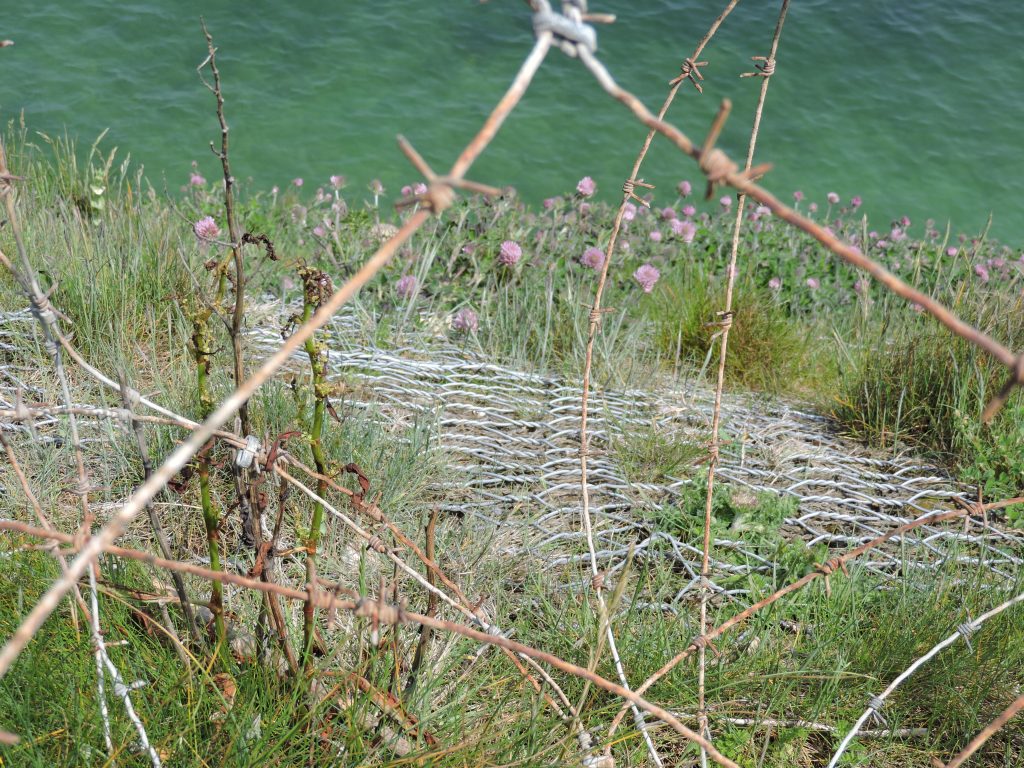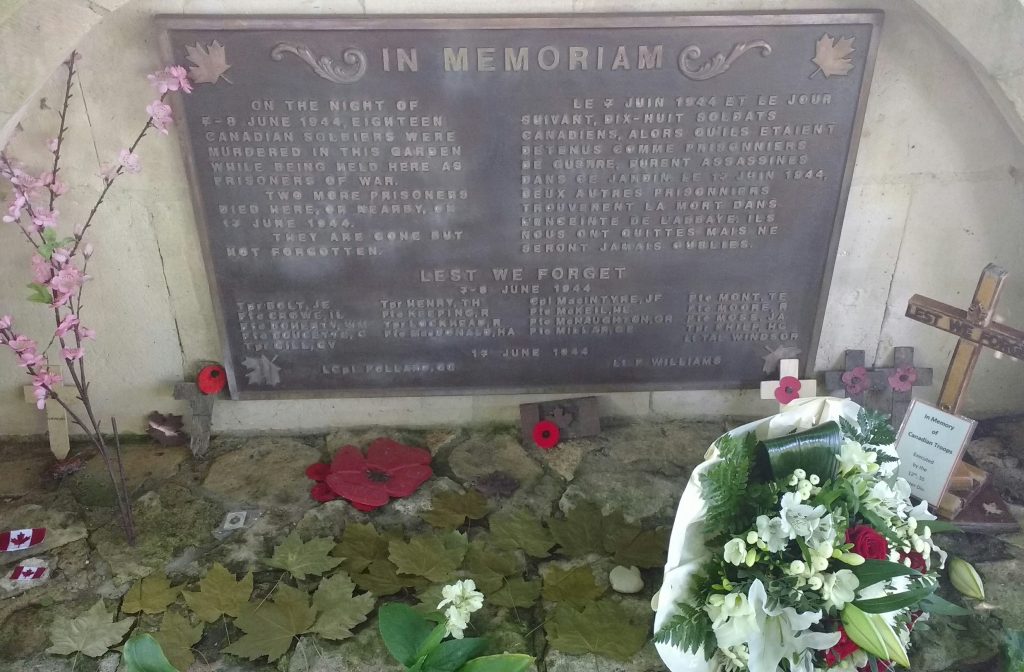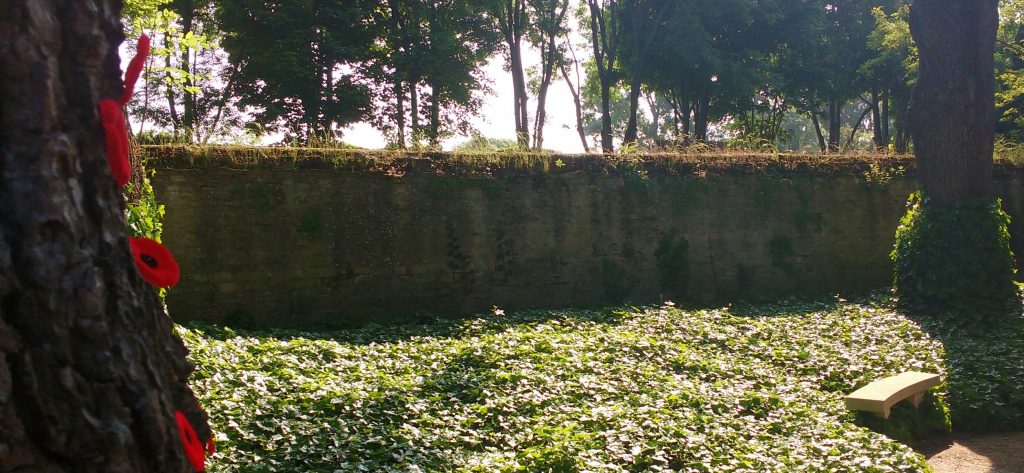Today was a very full day. We started in Hell’s Corner, outside Authie and Buron, and talked about the fighting in the days and weeks following D-Day. This was the theme of the day: Canada’s continued contribution following June 6, 1944.
We discussed the tank battle in Authie and some of the Nazi atrocities committed against Canadian prisoners of war. Much of the day was devoted to talking about the Canadian offensives of Operation Atlantic and Operation Spring. But the part of the day that has stayed with me the most, the few minutes which will stay with me for a very long time to come, were the few minutes we spent with Madame Carville.
Madame Carville is a sweet, elderly French woman living in Authie. She lives in the same house her family lived in while she was growing up, the house they were living in in 1944. She was 24 that year. On June 7, 1944 there was a battle between the Canadian forces and the Germans in Authie. Some of the civilians in the village attempted to help the wounded Canadian soldiers, and they were shot for their efforts. Madame Carville’s father was one of these civilians. He died helping one of our men, and yet, to her, Canadians are considered sacred. I can’t help but feel as though it should be the other way around. I don’t think anyone could blame her if she felt some animosity toward Canadians, or soldiers in general. We owe her father, and her, a great debt – he died for our countrymen. And yet she feels so strongly about Canadians, has so much love and gratitude in her heart. It’s something I’ve noticed quite a bit since we’ve been in Normandy.
The Canadians are remembered here. Our soldiers who died here, on these fields and beaches so far from home, are thought of with respect, honoured every year, and remembered every day. I am so proud to say I come from the same country as these men. I am so honoured to have their service as part of my past. And I am so fortunate that they were willing to give their all so we can live the lives we have today.
We’ll be heading for home in a couple short days. This tour has been nothing short of extraordinary. I could write for days about the things we’ve seen and heard, about the cemeteries and the battlefields, about the countryside which still bears the scars of wars which happened so long ago. I will carry this experience with me for a very long time, and I will always remember, with great respect and gratitude, the men we learned about here.
“The sun, now it shines on the green fields of France
There’s a warm summer breeze that makes the red poppies dance
And look, how that sun shines from under the clouds
There’s no gas, no barbed wire, there’s no gun firing down”
–The Green Fields of France, Eric Bogle
-Shelagh Prowse




